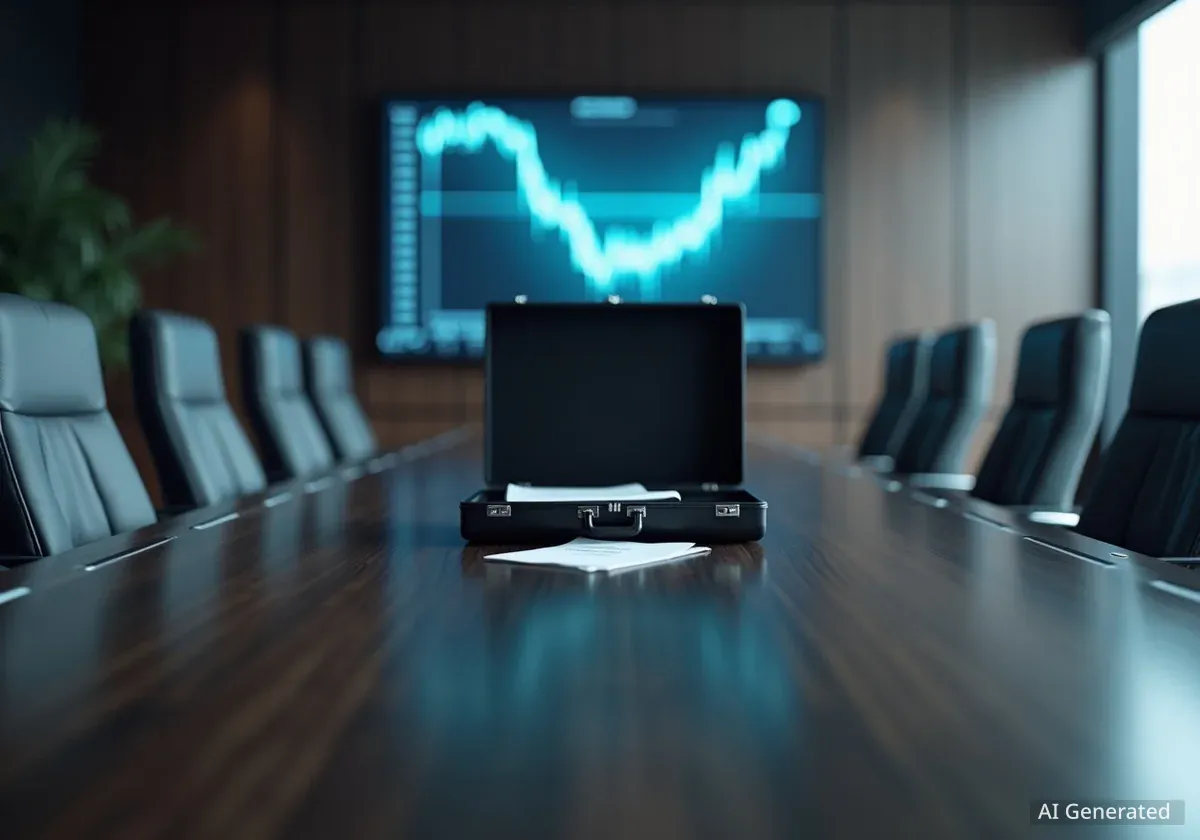The Central Bank of Iran has ordered the liquidation of Ayandeh Bank, one of the country's major private financial institutions, following years of financial instability driven by massive, high-risk loans to a single real estate project. The bank's assets and liabilities will be absorbed by the state-owned Bank Melli, raising concerns about the stability of Iran's largest bank and the potential for widespread economic consequences.
The collapse has left the savings of approximately seven million depositors in jeopardy and exposed deep-seated issues of regulatory failure and political influence within Iran's banking sector. The bank had accumulated debt equivalent to roughly $5.1 billion by the time of its dissolution.
Key Takeaways
- Iran's Ayandeh Bank has been officially dissolved and is being merged into the state-owned Bank Melli.
- The collapse is primarily linked to enormous loans funneled into the development of Iran Mall, a massive shopping complex owned by the bank's founder.
- Approximately 70% of the bank's lending portfolio was directed to the Iran Mall project, a violation of banking regulations.
- The bank's debt reached 550 quadrillion rials (around $5.1 billion), threatening to trigger significant inflation if the government prints money to cover losses.
- The failure highlights systemic weaknesses in Iran's financial oversight and the impact of political connections on the banking industry.
A Rapid Rise Fueled by High Interest Rates
Ayandeh Bank, founded in 2010 by businessman Ali Ansari, quickly became a major player in Iran's financial landscape. Its primary strategy for growth was aggressive and, in retrospect, unsustainable. The bank offered interest rates on deposits that were consistently about four percentage points higher than the limits set by the country's Money and Credit Council.
This approach successfully attracted millions of depositors seeking better returns, allowing Ayandeh to rapidly expand its market share. By 2017, the bank held an impressive 7.6 percent of all deposits in the entire Iranian banking system. This inflow of new cash created an illusion of robust health and stability.
However, this model functioned similarly to a Ponzi scheme, where new deposits were essential to pay the high interest promised to earlier investors. Behind the scenes, the bank was channeling this capital into highly illiquid and speculative ventures, setting the stage for an inevitable crisis.
The Iran Mall: A Gamble Too Large
At the heart of Ayandeh Bank's downfall is its connection to the Iran Mall, a colossal shopping and leisure complex located west of Tehran. Spanning 1.95 million square meters, the project was intended to be a monument to modern Iranian commerce. The mall was developed and owned by Ali Ansari, the same individual who founded the bank.
A Clear Conflict of Interest
Investigations revealed that the bank was essentially lending money to itself. The primary recipient of Ayandeh's loans was the Iran Mall Development Company, a subsidiary wholly owned by the bank. This created a massive conflict of interest and a blatant disregard for banking laws designed to prevent such self-dealing.
An estimated 70 percent of Ayandeh's entire lending portfolio was directed towards this single project. This concentration of risk was extraordinary, exceeding the legal lending limit for a single borrower by more than a thousand times. Iranian banking regulations cap ownership by a single shareholder at 10 percent, or up to 30 percent with special approval from the Central Bank, rules that were flagrantly ignored.
The bank's leadership gambled on the success of the 2015 nuclear deal, anticipating a wave of foreign investment and a surge in consumer spending that would make Iran Mall highly profitable. When the United States withdrew from the agreement in 2018 and reimposed sanctions, Iran's economy contracted sharply, consumer purchasing power plummeted, and foreign brands abandoned any plans to enter the market. The mall transformed from a symbol of ambition into a financial black hole.
Allegations of Political Protection
The ability of Ayandeh Bank to operate in such a risky manner for years has led to widespread speculation about political protection. Despite clear violations of banking laws, regulatory bodies failed to intervene decisively until the situation was irreversible. Calls for the bank's liquidation began as early as 2020, but action was delayed for years.
Ali Ansari, the bank's 63-year-old founder, has faced no legal proceedings following the collapse. He has publicly stated that his "conscience is clear." Unverified rumors have circulated for years suggesting ties between Ansari and powerful political figures, including Mojtaba Khamenei, the son of Iran's Supreme Leader, and his father-in-law, Gholam-Ali Haddad-Adel. While these connections have not been officially confirmed, they contribute to a public perception that the bank was shielded from scrutiny by the political elite.
"If the bank’s assets are overvalued or unsellable, the gap between debt and equity will again be filled from the pockets of ordinary Iranians." - Ali Sarzaeem, Economist
Economic Fallout and a Looming Threat
The dissolution of Ayandeh Bank poses a significant threat to Iran's already fragile economy. The bank's liabilities stand at a staggering 550 quadrillion rials, or approximately $5.1 billion. The government's plan is to sell off the bank's assets, primarily its real estate holdings including Iran Mall, to repay the seven million depositors.
The Inflationary Risk
If the assets, especially the largely vacant Iran Mall, cannot be sold for a price sufficient to cover the massive debt, the Central Bank will be faced with a difficult choice. The most likely outcome is that it will have to print new money to cover the shortfall and reimburse depositors. Financial analysts have warned this would be a "pure inflationary disaster," injecting a huge amount of liquidity into an economy already battling high inflation.
The decision to merge Ayandeh into Bank Melli, the nation's largest state-owned bank, is also fraught with risk. Critics argue that this move does not solve the underlying problem but merely transfers the toxicity to a larger institution. The moderate-conservative newspaper Jomhuri Eslami warned, "Even more tragic is that this infection has been passed on to Bank Melli—and that bank too will sooner or later meet the same fate."
While officials have promised that major shareholders will be held accountable and small depositors will be prioritized for repayment, public skepticism remains high. The collapse of Ayandeh Bank serves as a stark example of how cronyism and regulatory failure can erode public wealth and threaten the stability of an entire financial system.





